Tottenham Hotspur have confirmed the biggest result of the January transfer window so far by signing former Chelsea striker Timo Werner on loan with an option to buy.
Ange Postecoglou has managed to turn Spurs into a dynamic attacking force despite the summer sale of Harry Kane, but the club are still rebuilding their attacking line after losing their record goalscorer.
Only Erling Haaland and Mohamed Salah have scored more Premier League goals this season than Son Heung-min, whom Spurs could be without for six weeks if South Korea progress all the way to the Asian Cup.
Werner’s two seasons at Chelsea were disappointing after a £47.5 million transfer from RB Leipzig in 2020, with the German club buying him back for £25.3 million two years later.
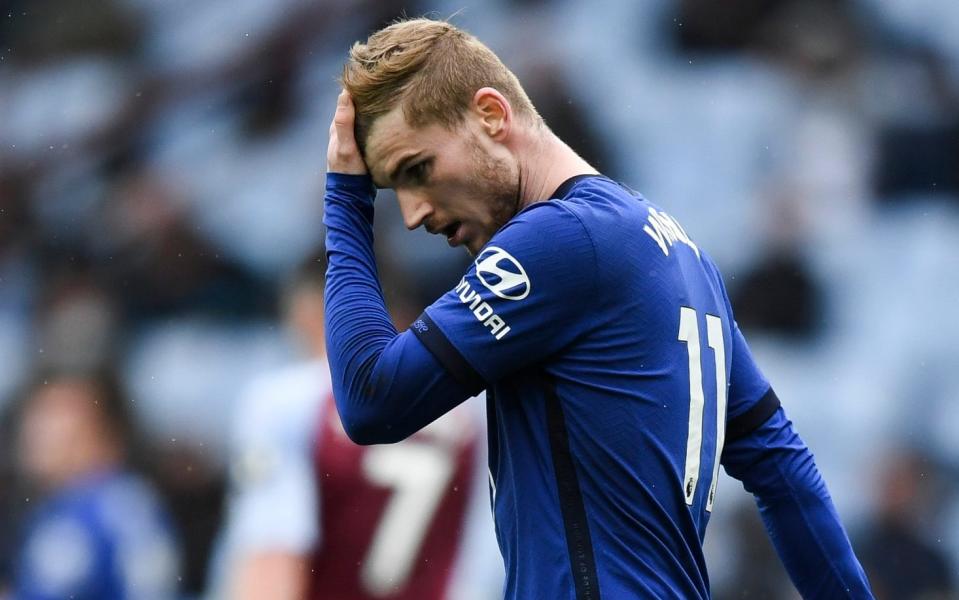

The forward has not set the Bundesliga on fire since his return, but there are reasons to be optimistic about the stylistic fit under Postecoglou at Spurs.
Similarities with Son… but one striking difference
One explanation for Werner’s problems at Chelsea was their failure to sign his best position. Was he better through the middle, from the left or as part of a front two?
However, the fact that Werner can be deployed as both a central striker and a left winger is unlikely to worry Postecoglou as these are the two positions that need to be covered in Son’s absence.
Richarlison can also play in both roles, with Postecoglou utilizing the versatility of his attacking options. Despite stronger opposition, particularly away games at Arsenal and Man City, Son has impressively taken the lead in more counter-attacks. Against teams behind the ball against Spurs, Son can move to the left with Richarlison at number 9 to get an extra goalscorer on the pitch. Werner would be part of this rotation.
Postecoglou likes to keep his wingers high and wide, with Tottenham’s wing-backs pushing into attacking midfield positions inside. This means his wide players must have the explosiveness to cope in isolation and take advantage of the one-on-one situations the system creates.
Like Son, Werner certainly has the speed that Tottenham’s head coach seems to appreciate. Even starting on the left, both players can threaten the back of the opponent’s defense with out-to-in runs. One of Werner’s best performances for Chelsea came in the 2021 Champions League final, when his moves stretched Manchester City’s backline and opened up space for his teammates.
If we compare Son’s touch map this season with Werner’s from last season, when he played more often for RB Leipzig, we see two players operating in similar zones. Son’s touches come slightly higher up the pitch in an enterprising Spurs team.
However, the big difference between the two players is their efficiency in front of goal. In each of the last four league seasons, Werner has underperformed expected goals, significantly exceeding his underlying data in the season before signing for Chelsea.
His debut season at Stamford Bridge, which saw him lose the goodwill of many fans, was a particularly cold spell. Werner has scored just six Premier League goals from 11.45xG, with a pathetic shot conversion rate of 7.6 percent. He was at the end of 23 ‘big chances’ as defined by Opta, and missed 18. Werner hasn’t been as loose since, but remains a below-average finisher.
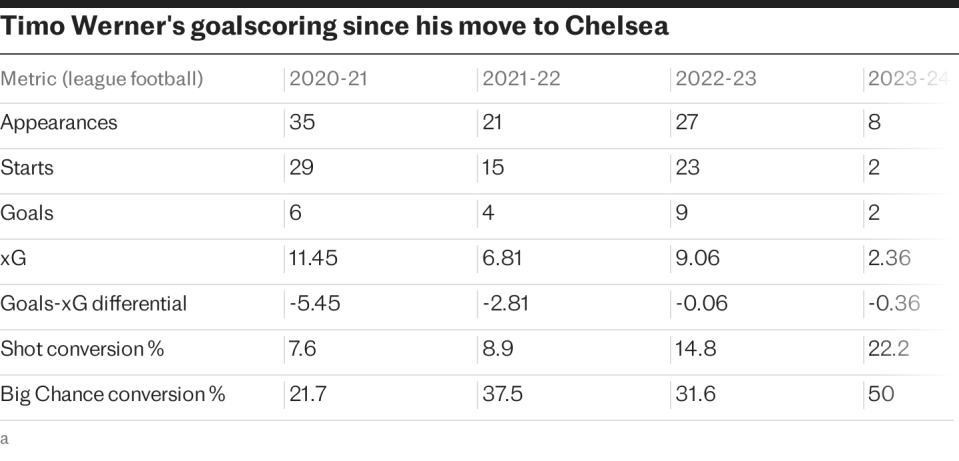

In contrast, Son has outperformed xG in all but one Premier League campaign (last season), often significantly. In three of the past four seasons, Son’s success rate has been above 20 percent, while his big chance conversion has been above 40 percent in three of those four seasons. Werner can accurately replicate Son positionally, but not his almost peerless finishing.
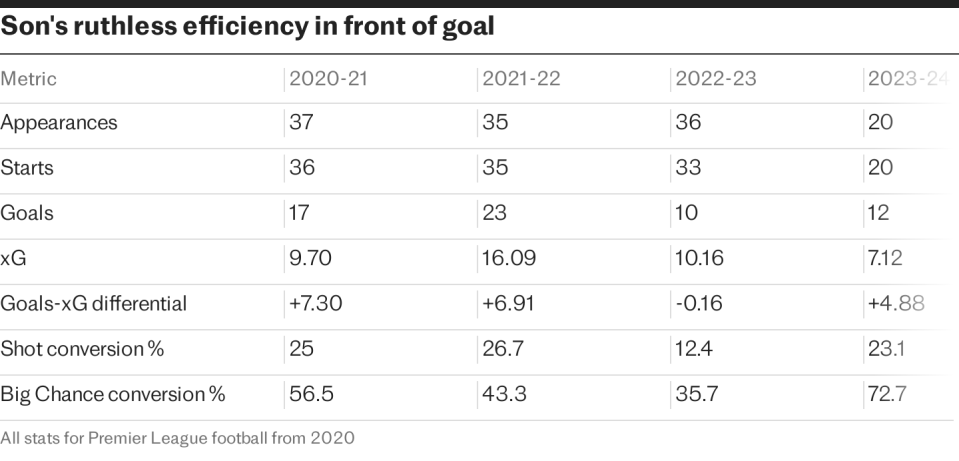

Werner’s battle to return to the Bundesliga
Clubs are looking for January recruits who can contribute immediately, and Werner should have enough experience to avoid a longer adjustment period.
However, Spurs are signing a player who has only started two games in the Bundesliga this season and one who they need to get back into form.
Werner produced a respectable nine goals and three assists in 23 league starts for RB Leipzig last season, but has just 204 league minutes to his name, as well as 50 minutes of sub appearances in the Champions League. Werner’s lack of minutes makes assessing his performances this season almost redundant.
A return to Germany was a chance for Werner to rediscover the form that initially attracted Chelsea, but his shot volume and xG per 90 minutes have not recovered to levels seen before his move to England.
RB Leipzig are far from dominant in Germany, but were around the third strongest team in the Bundesliga last season and are fourth in the league this season in terms of both points and expected goal difference. Their position in Germany is not a mile away from where Spurs sit in the Premier League.
One area where Werner continues to stand out statistically is in progressive passes received. According to website FBref, Werner is in the top five percent of strikers in Europe’s big five leagues in this area, suggesting his movement can still separate him from his markers.
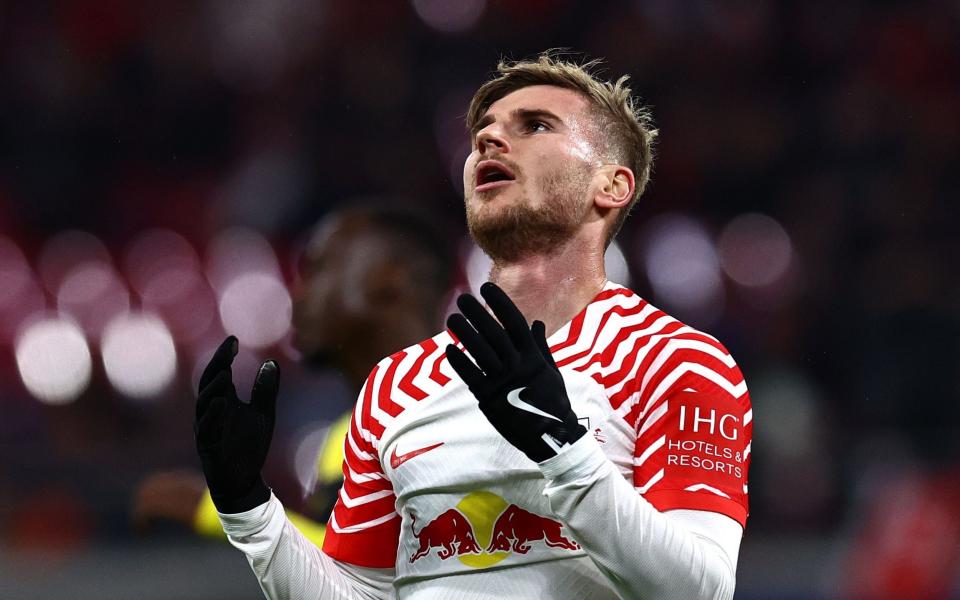

Spurs’ chaotic games could suit German well
In Werner’s two seasons under Frank Lampard and Thomas Tuchel, Chelsea averaged just over 60 percent of the ball in the Premier League. Only Manchester City and Liverpool had more ball possession. Teams tended to sit deep and absorb pressure against Chelsea, reducing the space at the back where Werner likes to operate. Tuchel’s Chelsea were a very orderly and structured side whose games were often low-scoring, which limited their potential over a league season, but they became a successful cup team.
Spurs also have a lot of ball possession, but their football under Postecoglou is more direct and their games back and forth. This should suit Werner, who prefers to come in early rather than face a set defense from a standing start.
Only Newcastle United’s games have produced more expected goals, both sides combined, than Tottenham’s this season, with 3.56xG per game. Spurs are getting involved in helter-skelter matches and almost seem to cheer them on, which should give Werner room to breathe after a claustrophobic tactical assignment at Chelsea.
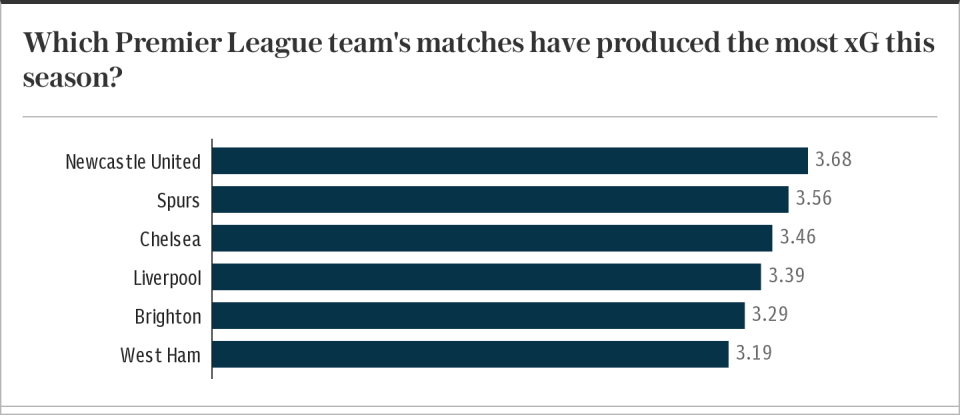

Can he keep himself onside?
You may remember that Werner’s offside habit at Chelsea became something of a running joke, with countless goals disallowed because he failed to time his runs correctly. In his first season at Chelsea, he was called offside 42 times in all competitions, more than any Premier League player.
This has also been a source of frustration and self-deprecation among Spurs fans, who have seen Richarlison ‘score’ several goals only to have them disallowed for offside following a VAR review. In the Premier League this season, only Darwin Nunez has been offside more often than Son. Only Liverpool and Manchester United were offside more often than Spurs as a team.


In Werner, Spurs have added another player who, as Sir Alex Ferguson once said of Filippo Inzaghi, was born offside. This is a result of Werner’s style and strengths rather than a devastating mistake, and could reap huge rewards if he can stay on the right side of the line often enough. Spurs will certainly not lack attackers who want to live on the shoulder of the last defender.